Milltown Cemetery: MLA fears work will disrupt unmarked baby graves
- Published
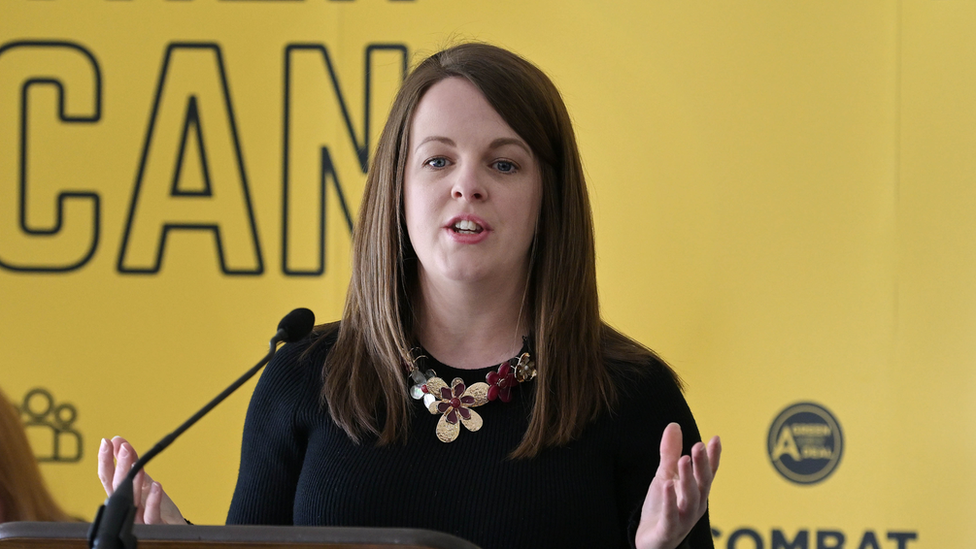
Alliance Party MLA Nuala McAllister believes her three stillborn siblings are buried at Milltown Cemetery
An assembly member who believes her stillborn siblings were buried in unmarked graves in Milltown Cemetery in Belfast has called for a halt to construction at the cemetery.
Nuala McAllister is concerned the work could disturb mass baby graves.
The work is being carried out on land which was reclaimed by the cemetery from Ulster Wildlife in 2009.
The trustees of the cemetery said the works "will not be located in proximity to known burial sites".
An area on the eastern side of the cemetery known as the bog meadows was, for many years, used as a mass burial site for stillborn babies, people who took their own lives and those who could not afford an individual burial plot.
This land was sold to Ulster Wildlife in 2000 but was returned to the cemetery nine years later following campaigning by family members of those buried in unmarked graves within the area.
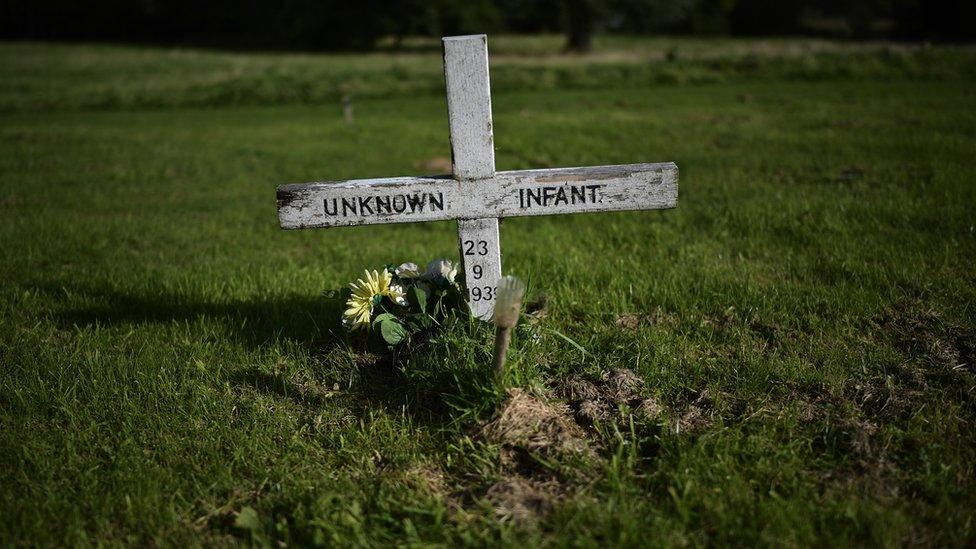
Nuala McAllister said her family will never know for certain where her siblings are buried (archive image)
The Alliance Party MLA for Belfast North, Nuala McAllister, said her family believes that three of her siblings could be buried on this land.
Ms McAllister said after her mum lost a baby boy during birth and twins during pregnancy, the bodies of these babies were taken from her to be buried.
"[She] has been told that they are at Milltown but we cannot get concrete records of where exactly they are," she told BBC News NI.
The cemetery has now undertaken a project of works including the construction of new drainage and pathways on the land reclaimed from Ulster Wildlife in 2009.
The trustees of the cemetery have said that following the completion of an archaeological survey they have "complete confidence" that this work "will not be located in proximity to known burial sites".
'No Confidence'
"Unless there is full transparency with everything that is going on, I have no confidence," said Ms McAllister.
"When it comes to how we deal with the past, the way in which the Catholic Church, in particular, dealt with women in childbirth, with stillborn babies, I am yet to be convinced that everything that is going on here has had the correct analysis and the correct parameters on which analysis should actually take place.
"I am not going to let this rest, this affects me personally, it affects my mum and it affects so many mothers across Northern Ireland," she added.
Ms McAllister said she had raised the issue with the Department for Communities and the first and deputy first minister's office.
"I am calling on the Catholic Church, in particular the trustees of Milltown cemetery, to put a halt to any work that's taking place there so that we can actually have access, where there is public transparency, where everything can be held to account," she said.
"I'm calling on the Department for Communities minister to halt any work and use the powers that they have to ensure that those babies and those people who are buried in these burial grounds... that they can actually rest in peace."
Ms McAllister is among several relatives of people buried in the area who have raised concerns.
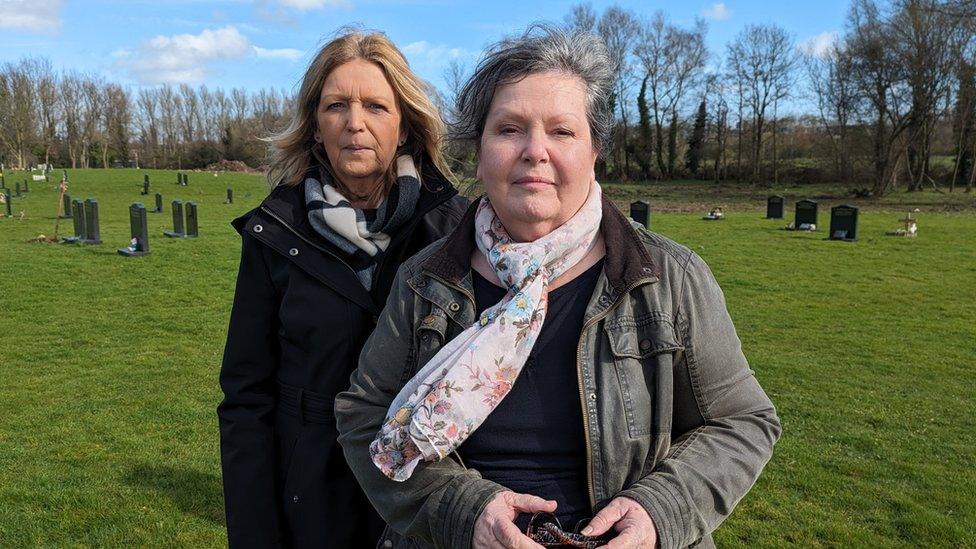
Siubhainin Ni Chutnneagan (left) said the cemetery was failing to protect the remains of her family
Siubháinín Ní Chutnneagan's great-grandfather, aunt, and cousin are among those buried in the area.
She said they were buried there because her family could not afford individual plots.
She has accused the Catholic Church of failing to protect her family members' remains.
"As a Catholic we entrust our Catholic dead to these people and they're supposed to protect them, and what they're doing is not protecting them," she told BBC News NI.
Also among those to raise concerns is Toni Maguire, an archaeologist who previously worked on the site.
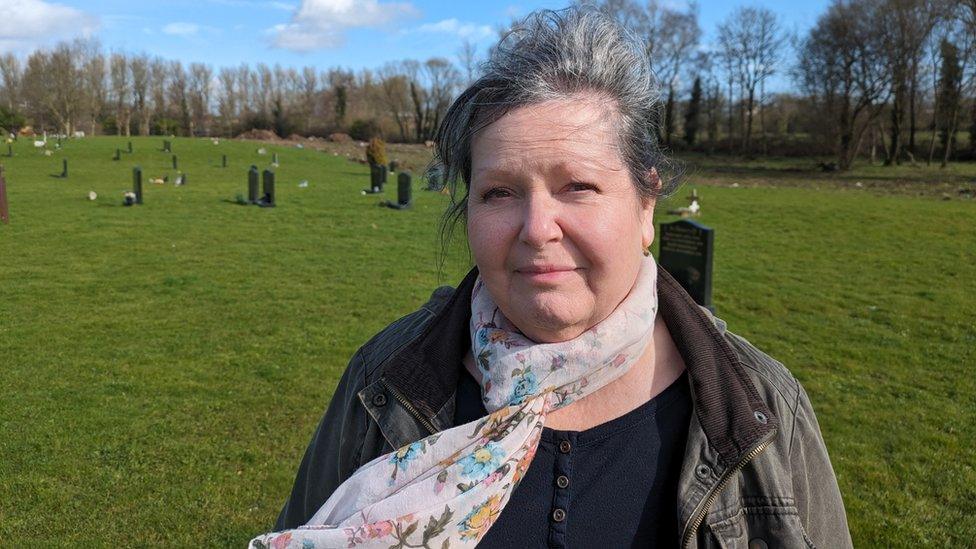
Archaeologist Toni Maguire is concerned that ongoing construction work at the cemetery will disrupt the burials
"The records in the cemetery have approximately 11,000 souls that were buried in mass graves across this land," Ms Maguire said.
But she says these records do not account for those "being buried in a furtive manner".
"The babies would have been brought in at night under cover of darkness and would have been buried by a family member in just an individual shallow grave," she said.
"They are driving 14 tonne diggers across this land which contains a lot of these burials."
In a statement released on 11 March, the Trustees of Milltown Cemetery said the upgrading of drainage and pathways was essential, but work had been undertaken to establish if the area had previously been used for burials.
"In November 2023, the trustees therefore secured the professional services of Northern Archaeological Consultancy Ltd. to investigate this section of the cemetery," the statement continued.
"Having provided the trustees with a clear and defined boundary of the location of all burial sites, including baby burials, within this section of the cemetery, this extensive archaeological survey assists the cemetery trustees to determine where drains and pathways can now be placed, with the complete confidence that they will not be located in proximity to known burial sites."
The Diocese of Down and Connor declined a request for comment.
'Complications'
Dr Alastair Ruffell, a geologist and geophysicist at Queen's University in Belfast, who specialises in the search for buried and sunk items, said there are "complications that must be considered in graveyard surveys".
"There is no scientific method of proving a human burial without excavation," he said.
"What can be done is give levels of assurance, from unlikely [thin soil, no indications], to likely [presence of known burials, thick soil, changes in geophysics, plant growth, logical-size humps and hollows in the ground, grave markers].
"A mass grave with commingled skeletal remains can be hard to tell apart from other infilled excavations or natural, infilled hollows."
A spokesperson for Northern Archaeological Consultancy Ltd. said their work was "carried out under licence from the [Department for Communities, Historic Environment Division] to the highest archaeological standards".
The Department for Communities said it had permitted the digging of test trenches.
"The purposes for digging the test-trenches were to establish whether any unmarked and previously unrecorded burials were present in this area... and the possibility of discovering archaeological deposits associated with wetlands," a spokesperson said.
"Twenty-eight trenches were excavated with nine previously unmarked burials located within three of the trenches.
"No burials were disturbed or excavated during the test trenching and with their locations now known, we understand that they will be avoided by modern burials as the cemetery expands into this area."
The spokesperson further added that the department "has not received any direct representation", regarding construction at the cemetery.
Related topics
- Published17 September 2019
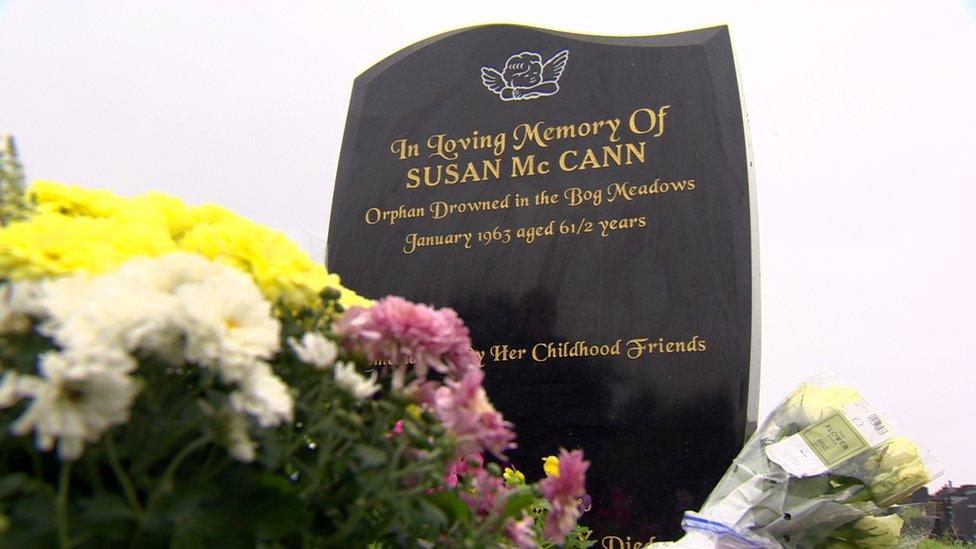
- Published23 June 2021
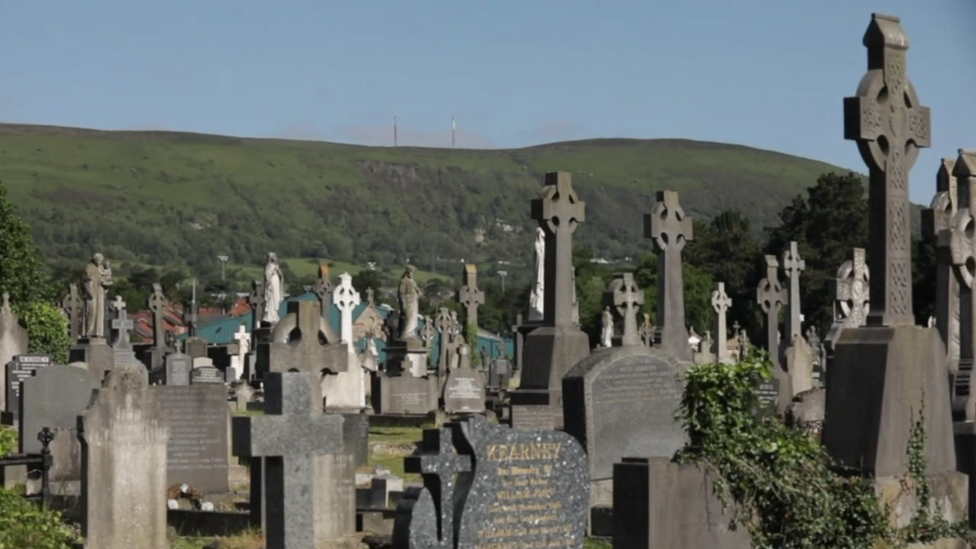
- Published18 February 2011